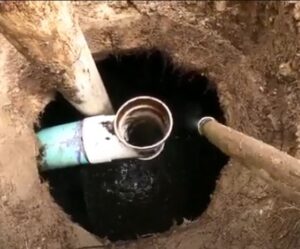How to Find Your Septic Tank
If you just moved into a home with a septic system or need to find your septic tank for maintenance, it can feel tricky. Septic tanks are buried underground, and finding them isn’t always easy. Here’s a simple guide to help you find your septic tank and lid for future inspections or repairs.
Steps to Find Your Septic Tank:
Check Property Records:
The location of your septic tank should be shown on the original building plans or septic system permits. You can usually find these at your local health department.
Look for Clues in Your Yard:
Septic tanks are often in the yard under the drain field. Look for areas of your yard with thick, green grass or spots that are a little raised. These signs might help you find your tank.
Follow the Sewer Line:
The septic tank is connected to the main sewer pipe that leaves your house. Find the pipe in your basement or crawl space and follow its path outside. The tank is usually about 10-25 feet from your home.
Use a Probe or Metal Detector:
If you have a good idea of where your tank is but aren’t sure, try using a thin metal probe or a metal detector to feel for a flat surface underground.
How to Find the Septic Tank Lid:
Look for Access Points:
Septic tanks usually have two lids—one over the inlet and one over the outlet. Sometimes these lids are visible above ground, but they are usually buried.
Follow the Sewer Line:
Once you’ve found your septic tank, the lid will be right on top of one of the access points.
Look for Ground Depressions:
Over time, the ground above a septic tank lid might sink a bit, causing a small dip. This could be a clue to where the lid is buried.
Hire a Professional:
If you can’t find the lid, you can call a septic tank professional. They have special tools like ground-penetrating radar to locate it.
Finding a Buried Septic Tank:
Look for Vent Pipes:
Some septic tanks have small pipes sticking up from the ground, which can help you find the tank.
Check the Yard:
If one part of your yard looks different from the rest, it might be a sign of a buried tank. Grass over the tank might grow differently because of the heat and moisture from the tank.
Carefully Probe the Ground:
You can use a metal rod to gently poke the ground and feel for something solid, but be careful not to damage the tank or pipes.
Call a Professional:
If your tank is deeply buried or hard to find, a professional can help with special tools.
By following these steps, you can locate your septic tank and its lid without too much trouble. If you’re having a hard time with septic tank pumping service, it’s always a good idea to call in a professional for help. Keeping your septic system well-maintained can save you a lot of money in the future!
If you are looking for the above services, see Septic Tank Services.
You may also like:
-
How Long Does a Septic System Last?
-
How Often to Pump Septic Tank for a Family of 2
-
How Do You Clean a Septic Tank?
-
Do Septic Tanks Have to Be Emptied?
-
How Often Should Septic Systems Be Pumped?
-
How Often Do Septic Tanks Need To Be Replaced?
-
Can a Collapsed Septic Tank Make Your Water Brown?
-
How to Find Your Septic Tank

